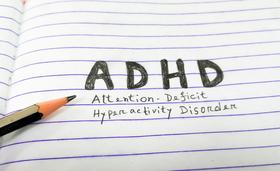Serving 202 students in grades Prekindergarten-1, Dr. William Henderson Lower ranks in the top 50% of all schools in Massachusetts for overall test scores (math proficiency is top 50%, and reading proficiency is bottom 50%).
The percentage of students achieving proficiency in math is 70-79% (which is higher than the Massachusetts state average of 64%). The percentage of students achieving proficiency in reading/language arts is 60-69% (which is lower than the Massachusetts state average of 71%).
The student:teacher ratio of 10:1 is lower than the Massachusetts state level of 12:1.
Minority enrollment is 73% of the student body (majority Black), which is higher than the Massachusetts state average of 44% (majority Hispanic and Black).
Quick Stats (2024)
- Grades: Prekindergarten-1
- Enrollment: 202 students
- Student:Teacher Ratio: 10:1
- Minority Enrollment: 73%
- Math Proficiency: 70-79%
- Reading Proficiency: 60-69%
- Source: National Center for Education Statistics (NCES), MA Dept. of Education
Top Rankings
Dr. William Henderson Lower ranks among the top 20% of public schools in Massachusetts for:
Category
Attribute
Diversity
Community Size
Student Attention
School Overview
Dr. William Henderson Lower's student population of 202 students has declined by 6% over five school years.
The teacher population of 20 teachers has declined by 41% over five school years.
Grades Offered
Grades Prekindergarten-1
(offers virtual instruction)
(offers virtual instruction)
Total Students
202 students

Gender %

Total Classroom Teachers
20 teachers

Students by Grade

School Rankings
The diversity score of Dr. William Henderson Lower is 0.78, which is more than the diversity score at state average of 0.63. The school's diversity has stayed relatively flat over five school years.
Math Test Scores (% Proficient)
(15-16)70-79%
64%

Reading/Language Arts Test Scores (% Proficient)
(15-16)60-69%
71%

Student : Teacher Ratio
10:1
12:1

American Indian
n/a
n/a
Asian
12%
7%

Hispanic
18%
23%

Black
32%
10%

White
27%
56%

Hawaiian
1%
n/a
Two or more races
10%
4%

All Ethnic Groups



Participates in the National School Lunch Program (NSLP)
Yes
Eligible for Free Lunch
49%
35%

Eligible for Reduced Lunch (13-14)
5%
5%

School Statewide Testing
School District Name
Source: National Center for Education Statistics (NCES), MA Dept. of Education
Frequently Asked Questions
What schools are Dr. William Henderson Lower often compared to?
Dr. William Henderson Loweris often viewed alongside schools like Richard J Murphy by visitors of our site.
What percent of students have achieved state testing proficiency in math and reading?
70-79% of students have achieved math proficiency (compared to the 64% MA state average), while 60-69% of students have achieved reading proficiency (compared to the 71% MA state average).
How many students attend Dr. William Henderson Lower?
202 students attend Dr. William Henderson Lower.
What is the racial composition of the student body?
32% of Dr. William Henderson Lower students are Black, 27% of students are White, 18% of students are Hispanic, 12% of students are Asian, 10% of students are Two or more races, and 1% of students are Hawaiian.
What is the student:teacher ratio of Dr. William Henderson Lower?
Dr. William Henderson Lower has a student ration of 10:1, which is lower than the Massachusetts state average of 12:1.
What grades does Dr. William Henderson Lower offer ?
Dr. William Henderson Lower offers enrollment in grades Prekindergarten-1 (offers virtual instruction).
What school district is Dr. William Henderson Lower part of?
Dr. William Henderson Lower is part of Boston School District.
School Reviews
Review Dr. William Henderson Lower. Reviews should be a few sentences in length. Please include any comments on:
- Quality of academic programs, teachers, and facilities
- Availability of music, art, sports and other extracurricular activities
Recent Articles

Banishing the Phone-based Childhood
The article advocates for a dramatic cultural shift - delaying kids' smartphone ownership until high school and social media access until 16, promoting more free play, and fostering a healthier, screen-free childhood through collective action.

Spanking in Public Schools: The Ongoing Debate
Indeed, there are still school districts today in America that allow teachers to spank students. Learn about the current spanking situation in schools and why the debate continues to heat up.

Understanding ADHD in Children: Signs, Diagnosis, and Support Strategies
This comprehensive article explores the complex nature of attention-deficit/hyperactivity disorder (ADHD) in children, providing insights into its symptoms, diagnosis process, and effective support strategies. From recognizing early signs to navigating the diagnostic journey, parents will gain valuable knowledge to help their child thrive. Expert insights, real-life examples, and practical tips empower readers to create a supportive environment that meets the unique needs of children with ADHD.





